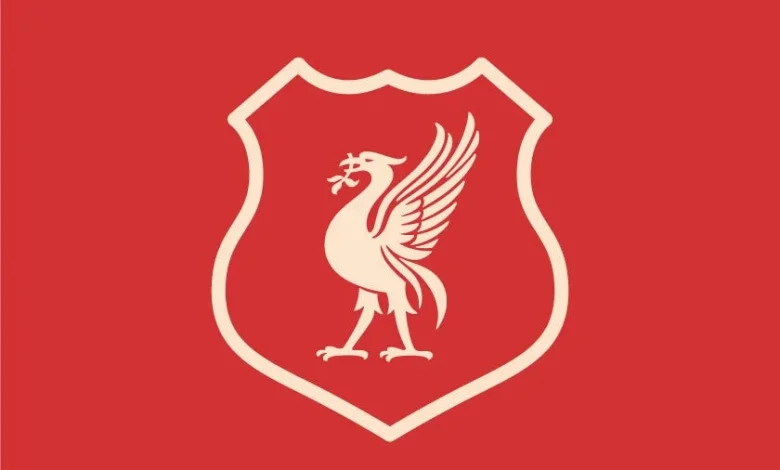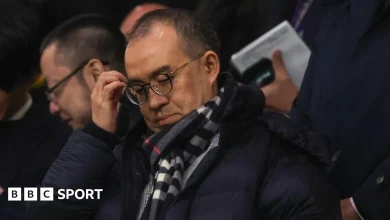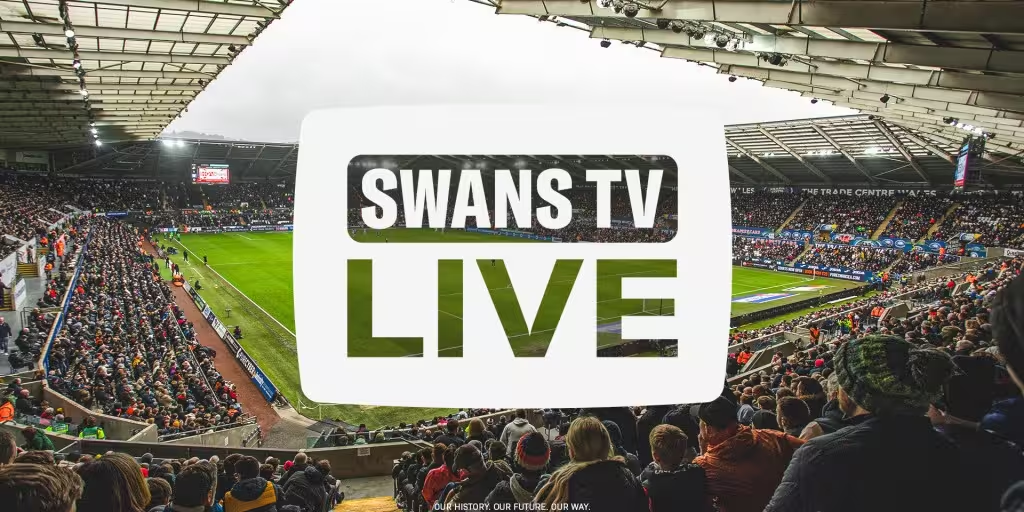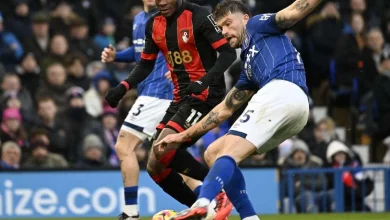This Run Is Nowhere Near as Bad As God-Like Klopp’s Worst Runs

Of all the supposed Liverpool ‘crises’ I’ve covered, including three under Jürgen Klopp, this is different.
This occurred to me when talking to Daniel (Rhodes) in our new subscriber-only podcast:
But it was more a hunch and remembering the data, so I’ve gone back in to look at the data.
Which of course took hours to search, collate, filter and then explain in this article.
And indeed, the data for this run is indeed much, much better.
The underlying numbers in this run under Arne Slot are excellent, and the opposition strength has been unusually hard, and five of the six games have been away.
Also, there have been two penalties in these games, both against Liverpool, and both ludicrous; and both decisive.
Who throws their hands and heels up when falling naturally?!
And that’s without all the other contexts – like an increase in injuries (three of the spine were missing at Brentford, as well as a handful of others), and in the current season, the absolutely necessary pain of transition, the loss of a couple of want-away players, and the ongoing grief at the death of a teammate that also hit preseason hard, amidst the insanely tough fixtures from day one.
Klopp is an absolute god of a manager, but just as the real God – Robbie Fowler, naturally – missed more chances than he scored, we forget those misses and remember the highlights.
This is hindsight bias. A main worry with Klopp leaving was that his tenure would be remembered only as highlights. No older Liverpool fan talks about the stodgy or poor periods under Bill Shankly or Bob Paisley. No one mentions the bad games Kenny Dalglish had.
Klopp’s teams, as I will show, had slumps worse than this current one, and for longer than this; and in the end, things reverted to normal.
Now, I can go back to dozens of other slumps in my 45 years as a fan that were just that – slumps, before returning to an elite level, or the levels that we were used to.
There was a famous one in 1981/82, which is when I was 10, when the Reds were 12th on Christmas Day, and … were top of the league by April, when I turned 11.
From just six wins in 17 (with five draws and six defeats), to champions by May.
Jürgen Klopp is also the highest-variance manager at Liverpool, followed by Bob Paisley, Bill Shankly, Gérard Houllier, Rafa Benítez and Kenny Dalglish (1985-1991 spell).
That means, Klopp had the biggest difference in a 38-game rolling league spell.
The worst managers were all low-variance; they never had the great spells. The great managers were high variance – they all had bad spells.
This below some data I was given from LFCHistory’s Terry Nolan that I rediscovered in a database from February 2019. Today, I manually updated what I could of Klopp’s data. (All are adjusted to three points for a win in 1981, after the change from two points, and include only managers to last at least 38 league games.)
Between the incredible 36 wins and two draws from a 38-game run from the end of 2018/19 to winning the title in 2020 (26 wins and a draw from the first 27 games as part of that 38-game run), and the best-season Klopp had for wins and underlying numbers (2021/22), came the major slump of 2020/21.
I make it that a run of games in that period garnered 64 points, which is not disastrous, but some 46 down on that insane run just prior to lockdowns.
What changed in the summer of 2021, then, to get the Reds back on track?
As with winning the title in 2020 and 2025, there was almost no transfer activity ahead of the massive resurgence.
Indeed, Liverpool’s three best seasons for points since 2018/19 have come with almost zero additions who played any kind of role, including two title wins and a loss of the title only on the final day in 2022.
The only summer signing was Ibou Konaté, who didn’t start many games; and in the winter, Luis Díaz.
Note: you want transfers, as so many fans seem to, then at least be patient for them and the team to settle, adjust and gel! I first showed about a dozen years ago that a big spend correlates more with success *the season after*. Similarly, I recently showed how loads of elite strikers struggled to score goals in the first season after moving clubs. Meanwhile, teams tend to improve and peak at around five years together, across sports and other walks of life.
A key player when fit was Thiago, who arrived a year earlier to little impression (notice a pattern?), but really made that 2021/22 team tick. Virgil van Dijk and the other centre-backs were back from injury, and crowds were back at Anfield. The team was in the sweet spot of average age and time spent together.
Just as Andy Robertson was only in five of Klopp’s first 22 squads after he arrived (excluding the League Cup), and Fabinho only started his first league away game in November after arriving in June, Ibou played only four Premier League games by mid-December.
He made just 11 appearances in the league that season, so his arrival didn’t turn Liverpool from strugglers to a team that won both domestic cups, finished with 92 league points and unluckily lost the Champions League final due to Real Madrid’s goalkeeper.
Díaz made an impact as he arrived super-fit and in red-hot form, but his six goals in 26 games was not remarkable.
If you remove the games in the domestic cups and ties against really, really poor European opposition (so if Liverpool had played Qarabağ yet, then Qarabağ, albeit even Qarabağ have won two Champions League games this season), then you can compare the underlying numbers and difficult of games in current run against the three Klopp slumps that spring first to mind: autumn 2017, early 2021 and early 2023.
Some of Klopp’s bad runs stretched to a lot of games, but the shortest run I found that seemed notable was the eight games of 2017, culminating when the Reds lost 4-1 at Spurs.
At that point Klopp’s win% after two full years was just 51 or 52%, roughly the same as Brendan Rodgers’ at Liverpool (what’s he up to these days?).
I fell out with a lot of Liverpool fans who said Klopp was therefore no better than Rodgers. I said that was ludicrous, and to trust me that it was ludicrous.
So I’ve opened Slot’s run of six games out to eight; not least as five of the six games have been away, and eight is a better sample size, to match Klopp.
Incidentally, the 2021 run started just after the 7-0 away win a Crystal Palace; just as Liverpool have had terrible finishing (on average) against Man United from roughly the same xG every time since beating them 7-0.
And I removed from the 2017 slump the 7-0 win against minnows NK Maribor, and which directly preceded the Dejan Lovren Wembley Nightmare Game against Spurs. Liverpool also beat Spartak Moscow 7-0 that season, then drew the next two home games, against Everton and West Brom.
(As such, avoid all 7-0s.)
The 2023 collapse was different, as that’s pretty much the only time under Klopp I had concerns.
He did too, it seems, as he was considering resigning.
That team was old, averaging almost 30 and at nearing end of its cycle; this team’s average age is just 26.9.
This team is the middle of a process that began in 2023, but where Klopp only overhauled the midfield.
Klopp brought in the fresh legs of teenager Stefan Bajčetić, who gave the midfield energy and bite, but at the cost (so far) of his career thereafter.
Bajčetić had half a season in La Liga last season where he was statistically the best defensive midfielder (massive amounts of defensive actions), still aged only 20 at the time, and maybe finally, having just turned 21, he’s due back from hamstring surgery that followed. (Playing teenagers regularly is a huge risk, for this very reason.)
By 2023/24, Liverpool were back to challenging for the league, only falling away late on; started by creating over 3xG away at Man United and rather than another 7-0, somehow failing to win. (Everyone blamed Díaz, who people now miss.)
Just look at the underlying numbers, balance of home/away games and quality of opposition in the runs of 2017, 2021 and 2023.
The 2023 run included a 3-1 away defeat at Brentford.
(And remember, Klopp’s teams struggled badly away at long-ball Watford on more than one occasion, albeit this season the league has gone decidedly shitball; although with the Reds it’s more been a case of not taking chances and being punished by overly-hot opposition finishing. Shitball will cause you problems, but there’s been a lot of randomness in this run of results.)
In the 2021 slump, Liverpool lost eight of 15 games, and then after three wins, got just one more win from the next five, before finally – via the head of Alisson – the revival gained steam.
These are the runs, with the data hopefully explaining itself. (If Klopp had any worse runs, let me know. I’ve just focussed on the two competitions that really matter, with domestic cup games removed and listed in grey, along with terrible European teams.)
And the current eight-game run:
Of course, as I rarely include League Cup games in any of my analysis, Liverpool’s next three games are Aston Villa, Real Madrid and Man City. More insanity. But then it gets easier! (See article linked below.)
Liverpool Will Have Played HALF their Toughest Games This Season by Nov 9th!
Now, if you don’t like underlying numbers and just care about the outcome bias of results, this is not the site for you. But these are summaries of the underlying numbers from the ‘slumps’.
An xG Difference of +0.86 would be excellent against an average level of opposition, but this has been an incredibly tough eight-game spell, with five games away.
Arne Slot’s running 38-game average is still 77 points from what I can tell, with his highest 87 points, from a few games into last season until a few games into this season.
So far, as his record is still so good, Slot remains low-variance, but he’s not had the time of Klopp, Shankly, Paisley, Houllier, Benítez and Dalglish, who all did six or more years.
While managers are expected to win more games in modern times, losing streaks have long been a part of otherwise successful Liverpool teams.
Also, going back to include games after the title was won in the spring, to my mind, is fatuous in terms of including them in a run to damn a manager. You can’t count games that don’t matter; albeit some of the above runs will have included times when title-winning teams eased off too.
Things may get worse, of course.
The next three games are brutal.
But slumps tend to come to an end, and things revert to ‘normal’. Especially if the underlying numbers are good, unless confidence drains and performances then dip.
And after five of six away games that has led to a ‘crisis’, the more nervous and negative fans get, even the home games may be tricky for a while.
But if your manager has won titles against the odds twice before (and a third time was on the cards but for the pandemic), and you’ve just bought a ton of great players to add to existing great players (and the team itself is not old), then you just have to learn to be patient.
Easier said than done, of course…
*This is a free article as I seek to counter the rabid negativity around the Reds. Commenting is for subscribers only, as are all episodes of our new (revamped) podcast.*




